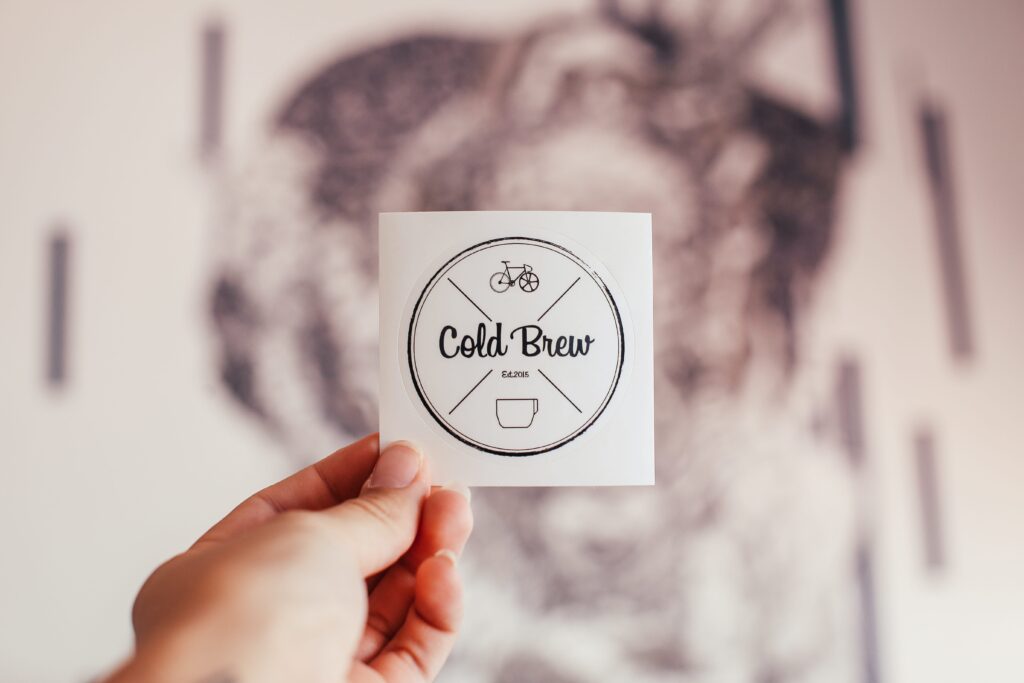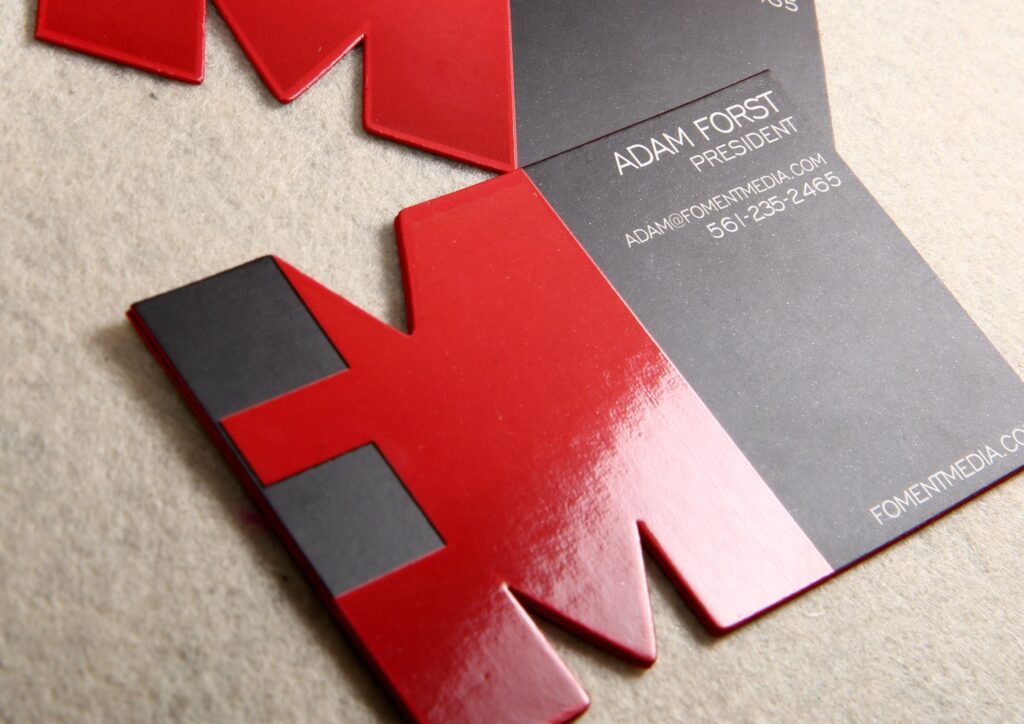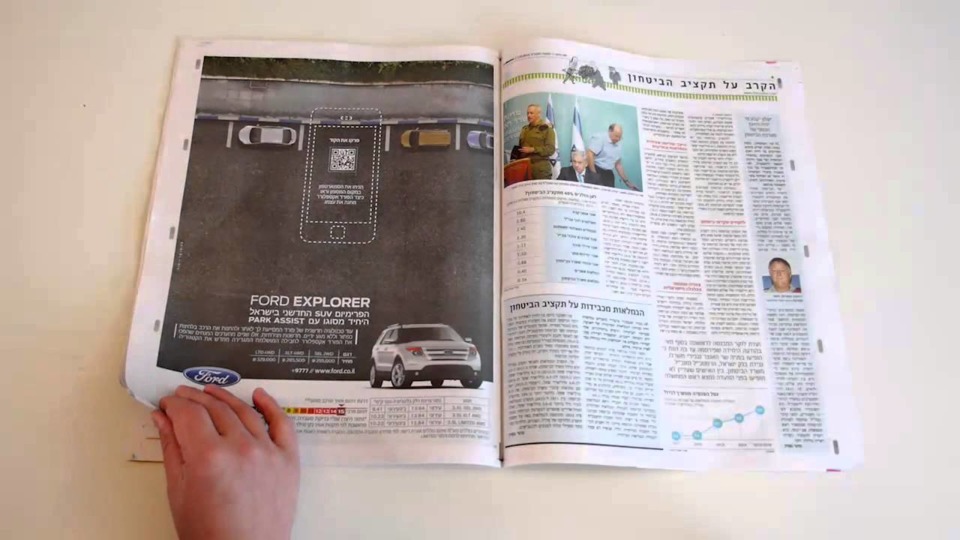We live in a world dominated by digital marketing and advertisements, where everything is online. It is crucial to recognize that physical touch still plays an important role in creating impressions and influencing business decisions. Studies have shown that physical touch evokes emotional responses, leading to an increase in trust and perception of quality. A research study evaluated the impact of physical touch on judgments and found that individuals who had a physical interaction with a product or marketing material were more likely to remember and make a purchase. This finding can be applied to marketing by incorporating physical marketing materials such as brochures, catalogs, and pamphlets into an omnichannel experience. By doing so, potential customers can have a long-lasting and memorable impression of your business. In conclusion, while digital marketing has its place, incorporating physical touch can positively impact marketing efforts and ultimately lead to effective marketing campaigns.
Benefits of Printed Marketing
In today’s digital age, businesses are heavily invested in digital marketing efforts. However, the power of printed marketing should not be overlooked as it can provide a number of benefits that digital marketing cannot.
Printed materials are tangible, making them stand out in a world where digital content can become overwhelming. Printed materials such as flyers, brochures, and business cards can be distributed easily at events and meetings. They can also be left in public places where potential customers are likely to see them.
Integrating print and digital marketing efforts is key to ensuring that the right audience is reached. This omnichannel experience provides consumers with a seamless user experience that can lead to higher conversion rates. Additionally, print marketing can help establish consumer trust, with baby boomers and magazine readers proving to respond well to print advertisements.
Printed marketing materials also have a long-lasting impact. A study by Canada Post / True Impact Marketing found that physical materials require 21% less cognitive effort to process than digital content. This means that people remember them more easily and for a longer period of time.

Target Audience and Consumer Trust
In today’s highly competitive world, marketing campaigns have become crucial for the success of any business. A successful marketing campaign needs to be focused on a target audience and establish consumer trust. In this article, we will discuss how printed marketing can effectively target a specific audience and establish consumer trust that is vital for business growth.
Every business needs to identify its target audience to generate leads and reach potential customers. Print marketing is a highly effective way to reach your target audience. Traditional print advertisements such as newspaper ads or flyers are aimed directly at the desired audience. This platform allows businesses to appeal to the target group’s interests by highlighting unique selling propositions and other aspects that make their products or services distinct from rivals.
A key aspect of any effective marketing strategy is to establish consumer trust, particularly for companies entering the marketplace for the first time. Printed marketing materials can help achieve this aim as they often appear more authentic and trustworthy than digital counterparts. Consumers still rely heavily on print materials for their purchases and are more likely to trust them. Building consumer trust in printed marketing can result in increased brand loyalty and customer retention, ensuring long-term business success.
Who is the Target Audience for Printed Marketing?
Print marketing offers businesses a unique opportunity to reach a wider range of consumers, particularly those who may not be reachable through online marketing efforts alone. While digital components have their benefits, print marketing stands out in today’s digital age and is more likely to be noticed by consumers. This is particularly true for those who have a preference for physical materials, such as magazine readers or baby boomers, who may be less likely to engage with digital advertising.
When it comes to the target audience for print marketing efforts, it’s important for businesses to consider covering all bases and not relying solely on digital marketing. This includes potential customers who may not have a strong online presence or who prefer a more omnichannel experience. Additionally, print marketing allows for a more emotional response from consumers, particularly through the use of eye-catching design and messaging that resonates with the ventral striatum, the area of the brain responsible for emotional processing.

Why Does Consumer Trust Remains High for Printed Materials?
Despite the rise of digital marketing, consumer trust remains high for printed materials. A survey conducted by Marketing Sherpa found that print advertisements have the highest level of consumer trust at 82%. But what contributes to this high level of trust?
One factor is the sense of legitimacy and permanence that printed materials provide. Unlike digital content that can be easily manipulated, printed materials have a physical presence that gives them a sense of authenticity. In addition, printed materials are perceived as having more staying power than their digital counterparts. A print advertisement found in a magazine, for example, can be picked up and referenced again and again, reinforcing its message.
Another benefit of printed materials is the ability to physically handle and interact with them. Consumers can touch and feel print advertisements, which contributes to a sense of trustworthiness. They can flip through a magazine or brochure, turn a page, and scan the content at their own pace. This physical interaction not only allows for a more holistic user experience but also strengthens the connection between the consumer and the brand.
Long-Lasting Impact of Print Ads
Print ads are often overlooked in today’s digital age, but they still have a lot of power and value in the marketing world. One advantage of print advertisements is their ability to leave a long-lasting impact on potential customers. Unlike digital ads that can quickly disappear from a user’s screen, print ads have a physical presence that can stick around for an extended period of time. This means that even after someone has viewed a print ad, the message can stay with them for days, weeks, or even months, making it more likely that they will remember the product or service being marketed. In this article, we will explore the long-lasting impact of print ads and why they are still an effective marketing tool.
How Do Print Advertisements Create a Long-Lasting Impression?
Print advertisements have the ability to create a long-lasting impression in the minds of potential customers, due to various factors. Firstly, physical materials such as magazines, brochures, and flyers are more likely to be kept for a longer period of time than digital counterparts, ensuring that the advertisement is still visible weeks or even months after it was initially received. This means that print ads have a greater longevity than their digital counterparts.
Secondly, the cognitive effort required to process a print ad is greater than that of digital content, which makes it more memorable and easier to recall. This is because reading a print ad requires a deeper level of engagement from the reader, which in turn increases cognitive processing and long-term recall.
Additionally, research shows that print ads are more trusted by consumers than digital advertising, and are more effective in reaching a diverse target audience. Many baby boomers still prefer print media over digital, and print ads have been shown to elicit a greater emotional response from viewers.
What Types of Print Ads are Most Effective?
When it comes to print advertising, certain types tend to be more effective than others in terms of generating results. Some of the most effective types of print ads include:
1. Magazine ads: These ads offer a targeted way to reach a specific audience and can be highly engaging and visually appealing. They also tend to be kept longer and seen multiple times, which can improve brand recall.
2. Direct mail: This type of print ad allows businesses to send targeted messages to potential customers, which can result in higher response rates and conversion rates. It is also highly customizable, allowing businesses to tailor ads to specific demographics or niches.
3. Newspaper ads: While the reach of newspapers has declined in recent years, they can still be effective for reaching local audiences. They are also often less expensive than other types of print ads.
4. Brochures or flyers: These are cost-effective options for promoting products or services and can be handed out at events or mailed directly to customers. They are also highly portable, allowing potential customers to review the information at their leisure.
Overall, print ads continue to be an effective way to reach potential customers. Print ads tend to elicit a higher emotional response than digital advertising and have a longer-lasting impact. In fact, studies have shown that print ads have a 20% higher motivation response than digital ads and a 77% higher brand recall rate. Additionally, readers tend to spend an average of 20 minutes or more reading printed content, which provides ample opportunity for businesses to make an impression.

Analyzing the Purchase Decision through Direct Mail and Magazine Ads
Marketing efforts are all about influencing the customer’s purchase decision. But how does one know which marketing activity or campaign impacts potential customers the most? This is where analyzing the purchase decision becomes crucial. Two highly effective marketing tools for analyzing the purchase decision are direct mail and magazine ads. Both are powerful mediums that can give businesses insights into their target audience’s behavior and decisions. Through this article, we will discuss how analyzing the purchase decision through these traditional advertising methods can help businesses in making informed marketing campaign decisions.
Direct mail is a targeted way of communicating with your potential customers. It is a form of print advertising where businesses send promotional material to the customer’s mailbox. It is highly versatile as it can be tailored to specific demographics or niches. Analyzing the response rate can give businesses an idea about which demographic is more likely to engage with their marketing message. It also provides businesses with data such as location or age of the respondents, which can be used to refine their target audience. Similarly, magazine ads offer a targeted way to reach a specific audience. Analyzing the engagement level, recall, and frequency can give businesses crucial insights into how their target audience is perceiving their marketing message. By exploring the content that resonates most with the audience, businesses can make informed decisions about future marketing campaigns.
What Role Does Direct Mail Play in Influencing the Purchase Decision?
Direct mail remains a powerful content marketing tool that continues to influence purchase decisions. According to the Marketing Sherpa survey, 76% of people trust direct mail ads when making a purchasing decision. Direct mail can effectively engage customers through targeted messaging and personalization, leading to a lasting impression and increased customer engagement.
Direct mail campaigns that offer a personalized user experience can have a huge impact on customers’ perception of a brand. By tailoring a direct mail message to a target audience, businesses can create an emotional connection with potential customers that may not be possible with other forms of advertising. The physical nature of direct mail can also contribute to its effectiveness. People are more likely to remember a direct mail piece than a digital advertisement, especially if the piece stands out in terms of messaging or design.
How Do Magazine Readers Respond to Print Ads?
Magazine readers have shown positive response towards print ads and have been found to be more engaged with them compared to digital ads. According to a study conducted by Temple University’s Center for Neural Decision Making, magazine readers showed heightened activity in the ventral striatum, a part of the brain associated with reward processing, when viewing print advertisements compared to their digital counterparts.
Furthermore, Canada Post and True Impact Marketing conducted a study that found that participants spent more time looking at print ads (39%) compared to digital ads (15%). Participants also showed greater emotional response and cognitive effort towards print ads, suggesting a deeper level of engagement with the content.
Several factors contribute to the effectiveness of print ads in magazines. As physical materials, print ads have a long-lasting impact and can be revisited at any time. Print ads in magazines also offer an omnichannel experience, whereby readers can easily transition to a digital presence for further engagement. Additionally, magazine readers tend to be more attentive and focused while reading compared to browsing through multiple tabs on a screen, leading to a higher level of effectiveness for print ads.
Reaching Out to Baby Boomers through Traditional Advertising Strategies
Baby Boomers, those born between 1946 and 1964, represent a significant part of the global population. Despite the increasing emphasis on digital marketing strategies and online presence, traditional advertising still holds considerable weight for this demographic. In fact, many Baby Boomers prefer traditional advertising methods over digital methods.
What Strategies Can Marketers Use to Reach Baby Boomers through Print Marketing
Despite the rise of digital marketing, traditional print advertising remains a powerful tool for businesses looking to reach Baby Boomers. Born between 1946 and 1964, Baby Boomers are a large demographic with high purchasing power. Direct mail and magazine ads have been found to be especially effective when targeting this group.
To create effective print advertisements, marketers should consider larger font sizes and simpler designs that cater to their target audience. Baby Boomers may have difficulty reading small print, so making important information more visible is essential. Additionally, the use of customer testimonials and localized offers can be effective in attracting their attention.
Marketers can also use print advertising to create an omnichannel experience for potential customers. By incorporating the same messaging and design across multiple platforms, businesses can create a cohesive and memorable user experience.

Conclusion
In today’s digital age, it can be easy to overlook the power and relevance of print marketing. However, print materials offer a tangible and memorable experience that can help a brand stand out from its digital competitors. By incorporating print materials into a marketing strategy, businesses can reach a wider range of potential customers and evoke an emotional response that may be less likely with digital advertising alone. Additionally, print materials can be used alongside digital efforts to create a more comprehensive and effective marketing campaign. To do this successfully, marketers should focus on creating a consistent message and design across all platforms. While digital marketing is undoubtedly important, it’s important not to overlook the benefits of print marketing and how it can be integrated with digital efforts to effectively reach target audiences.…
Read More




 301 redirects are one of the most popular ways to improve your website’s search engine rankings. The process is simple: you add a 301 redirect to your website, and all page requests that led visitors to other pages on the site will automatically be redirected to the new page. 301 redirects can be extremely useful for businesses of all sizes. They can help increase site traffic, conversions, and engagement.
301 redirects are one of the most popular ways to improve your website’s search engine rankings. The process is simple: you add a 301 redirect to your website, and all page requests that led visitors to other pages on the site will automatically be redirected to the new page. 301 redirects can be extremely useful for businesses of all sizes. They can help increase site traffic, conversions, and engagement.